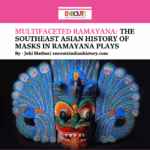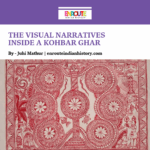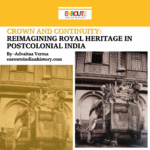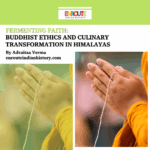
By Riya Pradhan
For a country that's dipped in religious and cultural traditions, festivals are nothing but the greatest testament of societal integration and harmony. Tracing the same theme of ethnicity, the festivals of our country are also popular for their diverse versions. Every single avenue will be celebrating a different festival on selective days and that is the beauty of our country. Reviewing all these festivals in one go is a task that even Hercules might pass on. But if at all
we were to encourage people to learn more about festivals there is an easier way out. Cuisine! Nothing brings people closer than their taste buds on the eve of a festival. Be it the Faral of Diwali or the Sheer Kurma of Eid-ul-fitr, the Sadhya of Onam or the Naivedya offered during Navratri, the satisfaction of celebrating a festival is incomplete without enjoying the delicacies it has to offer. One such festival and its cuisine that has united India in its truest
form is 'Navroz'.
Celebrated to commemorate not just the new year but also the onset of Spring, rebirth of life and triumph of light over darkness, Navroz as a festival holds significant value to the Iranians all across the world. This ancient festival originated as a Zoroastrian celebration and has been observed for over 3,000 years. Just like any other festival in India, Navroz also embodies rituals and traditions related to culinary, culture and cleanliness.
Unravelling the secrets of Navroz and its cuisine might require us to take a small tour to South Bombay. On the eve of Vernal Equinox, while walking down the serene streets of Matunga, one comes across a quaint complex that inculcates in us a sensation of harmony and serendipity. This, is the Parsi colony of Matunga. The Mistry's have been a resident of the colony since the eve of Independence and have been a witness to the ever evolving cultural
fabric of our country.
On being asked about the Navroz cuisine, Mrs. Pearl Mistry smiled and spoke about the symbolism associated with the festival and highlighted the rituals that followed. It was understood that the table prepared for food was the most important of it all. Known as the Haft Sin table, it is expected to have 7 items that start with the Persian letter 'S'. These items are :
1) Somāq (sumac berries): Symbolizing the triumph of good over evil.
2) Sabzeh (sprouted grains): Symbolizing rebirth and renewal.
3) Samanu (sweet pudding): Representing affluence and fertility.
4)Seeb (apple): A sign of beauty and good health.
5) Senjed (dried fruit): Reflecting love.
6) Seer (garlic): Denoting medicine and health.
7) Serkeh (vinegar): Representing age and wisdom.
She further Informed us about the importance of Khatta Meetha (sweet and sour) in every dish referring to the use of sugar and vinegar in adequate amounts.
Apart from these items, the dishes that enjoy importance are, Pachi no Patio (Fish made in tomato gravy), Dhaan Dar ( Plain Yellow Dal with Garlic n Rice), Sev or Ravo (usually had for breakfast), Falooda (sweet drink).
Elaborating on the recipe for Pachi na Patio, Mrs. Mistry explained how onions, tomatoes, coriander, ginger garlic paste, yellow lentil and green chillies are fried together with red chilli and turmeric powder. On a low flame, vinegar and sugar are also added to the masala paste. Once the oil starts oozing out of the masala, any fish of one's choice can be put. The Mistry's have long preferred Prawns and Pomfret as their staple ingredient but everyone's allowed to experiment in their own way. This flexibility in the cuisine can be traced back to the 18th
century where the acculturation of Parsis into the English and Indian communities were aided by the absence of gustatory sanctions(M.M Murzban's monograph of 1917)
Every Parsi kitchen will have its own affiliation with Vermicelli and Saffron desserts just like Rawo which is prepared using Ghee, Sugar, Jaggery, lots of nuts and semolina. The Mistry's have their own attachment with Navroz and its cuisine. More than a celebration of novelty, it represents the value of unity and fraternity for them. An opportunity to spend quality time with family is on the pinnacle of reasons to celebrate Navroz.
Understanding a cuisine requires a multifaceted approach and for that very reason, a scholar’s opinion becomes imminent. Professor Kurush Dalal, who is an archaeologist and culinary anthropologist based in Mumbai aids us with the approach. According to him, the days of Navroz keep varying according the Equinox and genuine followers will take the efforts of knowing the exact date and celebrate accordingly.
According to Professor Dalal, “The Iranians have several exclusive dishes when it comes to traditional feasts such as Ashe-Reshteh (noodle soup), and Sabzi Pulao (herbed basmati rice), Kuku Sabzi (herb-baked omelet), while the Parsis have the beloved Parsi falooda. That is the only exclusive dish the Parsis have on the day.” The Mistry’s happily concurred with this fact too.
During our conversation, Professor Dalal enlightened us with a relatively lesser-known Parsi dish of considerable cultural importance during Navroz—a Parsi version of falooda. He explained that in Persia, a dessert known as faloodie was made using shaved ice, rose syrup, fruits, and lemon juice, quite similar to an ice gola. Having come to India, the Parsis adapted the recipe using locally available ingredients: with milk being available, they replaced shaved ice with milk but retained the rose syrup, and added sabja seeds and falooda noodles as well. The classic dish, now called the royal falooda at establishments like Badshah Coldrink opposite Crawford Market in Bombay, is a true culinary heritage. In the context of food trends in the modern day, he pointed out that though everyone has put their own modern twists to Parsi food, such changes are a natural phenomenon. He asserted that traditional recipes must be recorded. He furthur added that one should be aware that future generations might lose out on a few dishes—like those made with liver or kaleeji—which are now less in demand. Witnessing the effects of migration, he pointed out that Parsi dishes have been radically altered in India. For example, the Indian version of dhansak now features pumpkins, brinjals, and local spices, a divergence from the original Persian way of cooking meat and pulses together and serving it with naan. In India, rice has replaced naan, probably because of its local availability on the western coast where the Parsis had made a home.
Restaurants
On the onset of the Equinox, every corner of India that hosts a Parsi restaurant will also be a festival in its own. From the sweet aroma of Yazdani Bakery to the nostalgic ambience of Kyani and Co, Mumbai is endowed with such legendary Irani cafes. While keeping the authenticity intact, these restaurants and cafes are also known for their unwavering commitment to serve the most delicious delicacies.
In short, Navroz cuisine is not only a delicious odyssey through the rich historical legacy of Parsi and Persian culinary traditions but also a testament to the dynamic give-and-take between tradition and contemporary influences. Every dish, from the heavenly falooda to the lip-smaking dhansak, testifies to the strength of cultural heritage in the face of inevitable change. Just as the Parsis have managed to adapt their recipes to local taste over generations, it is important that we also continue to try and keep these precious traditions alive, thus ensuring that the flavors of Navroz remain a living symbol of unity, creativity, and the unconquerable spirit of community.
References
Michael, J., Celebrating Nowruz, Celebrating Nowruz. Edited by P. Beran, B.S. Hughes, and Outside reviewed by educators.
https://cmes.fas.harvard.edu/files/NowruzCurriculumText.pdf.
Special thank you to- Prof. Kurush Dalal, Mrs. Pearl Mistry and Mr. Roshin Ramakrishnan for the interviews and guidance.



















